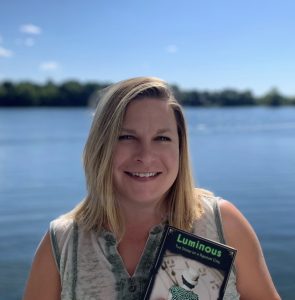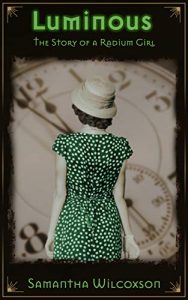Unforgettable Endings: Finishing Your Novel
 What part of writing your novel challenges you most? For some it is deciding where to begin or how to establish the characters and setting. And who hasn’t struggled with getting rig of slog in the center? But a challenge all writers have in common is bringing it all to a conclusion.
What part of writing your novel challenges you most? For some it is deciding where to begin or how to establish the characters and setting. And who hasn’t struggled with getting rig of slog in the center? But a challenge all writers have in common is bringing it all to a conclusion.
After spending countless hours falling in love with our characters, how do we say farewell?
My novels tend to conclude with my protagonist’s death, which readers know is coming due to the biographical nature of my stories.
Since I write about real people, the date of their death is known and each historical figure I’ve featured has left some things they had hoped to achieve undone. That might not sound like the neatly packaged sense of closure that writers aim for, but it is honest, tragic, and eternally relatable. In part, that sense of loss and lack of completeness is my goal. It is true to life and helps readers connect to historical figures as real people. What could be more authentic than dying when one still has more to accomplish?
For the style of my novels, these tragic endings are appropriate.
What type of ending makes sense for your novel? This might depend upon its genre or place in a series. It is likely that your protagonist will fulfill a quest or complete a goal. Make the ending a celebration of your character’s victory of which readers feel a part. A plot twist or alleviation of suspense might be in order, or maybe your readers expect a cozy happily-ever-after. Redeem, reconcile, and give closure.
Writers should have a goal for the end of a novel from the beginning. What did the opening of your novel promise that the end would bring? While the plot will naturally evolve and some of us might stick to our original outline more than others, our destination largely remains the same. Everything that happens in the novel is leading readers to that final moment, so deeply consider before you begin writing where the novel should end.
Writing your novel’s conclusion, or at least having it solidly outlined, before you begin has benefits besides having a clear goal in mind. It can also keep you from injecting extraneous information, subplots, or characters at the end of the book. This is not the time to introduce something new. That sort of plot twist tends to make readers roll their eyes as they close the book in frustration. Write an ending that fits the story. That doesn’t mean you can’t surprise your readers, but it does mean that the surprise should still make sense when they think back on the rest of the story.
What all novel endings should have in common is that they evoke emotion. Whether sorrowful or victorious, inspiring or shocking, give your reader something by which to remember you. Break their hearts. Stir up their passion. Compel them to action. How do you want your reader to feel as they turn that last page? I can’t answer that question for you, except to say they should certainly be feeling something that they will be eager to share with their bookish friends.
Whatever emotional response you’re looking for, it cannot be rushed. As much as writers struggle with saying good-bye to beloved characters, there is also a temptation to rush to the end once it is in sight. We’ve been waiting for this, planning for this, since the beginning, and we are anxious to get there. Remember that your readers are not on the same journey. Even if they can see where the story is leading, they don’t want to be cheated out of the building climax and satisfying conclusion.
Even worse, in your hurry, you could leave plot holes or irritating unanswered questions. Be aware of the story’s pace and keep it consistent in the final pages.
No secret formula exists for the perfect ending of your novel, but you might want to start with how the story makes you feel and what made you want to write it. How can the ending of your novel inspire those same feelings in your readers? What do you want to see happen in the life of your protagonist? If the ending of your novel is satisfying to you, chances are that your readers will agree.
—
Author Bio: Samantha Wilcoxson is an author of historical fiction and administrator of a history blog. She has written four full-length novels, three novellas, and two middle grade chapter books. Topics of her writing have ranged from the Wars of the Roses to America’s Civil Rights Movement. Samantha is passionate about history and exploring the personal side of events. In her writing, she urges the reader to truly experience what it might have felt like to live through a moment in history. Samantha’s most recent novel is Luminous, biographical fiction featuring Catherine Donohue, one of America’s “radium girls.” She is currently working on a nonfiction book about women of the American Revolution and a novelization of the lives of Woodrow Wilson’s wives, Ellen and Edith.
Blog https://samanthawilcoxson.blogspot.com/
Twitter https://twitter.com/carpe_librum
Instagram https://www.instagram.com/samantha_wilcoxson
Facebook https://www.facebook.com/PlantagenetEmbers/
Goodreads https://www.goodreads.com/samanthajw
Pinterest https://www.pinterest.com/samantha_wilcoxson/
Amazon Author Page amazon.com/author/samanthawilcoxson
LUMINOUS
 Catherine Donohue’s life was set on an unexpected course when she accepted a job at Radium Dial. The pay was great, and her co-workers became her best friends. But a secret was lurking in the greenish-grey paint that magically made things glow in the dark. When Catherine and her friends started becoming sick, this shy Catholic girl stood up to the might of the radium industry, the legal and medical communities, and townspeople who told her to be quiet. Would she be too late?
Catherine Donohue’s life was set on an unexpected course when she accepted a job at Radium Dial. The pay was great, and her co-workers became her best friends. But a secret was lurking in the greenish-grey paint that magically made things glow in the dark. When Catherine and her friends started becoming sick, this shy Catholic girl stood up to the might of the radium industry, the legal and medical communities, and townspeople who told her to be quiet. Would she be too late?
Catherine’s quest for social justice in the era between World Wars is emotive and inspiring.
BUY HERE
Category: Contemporary Women Writers, How To and Tips






























